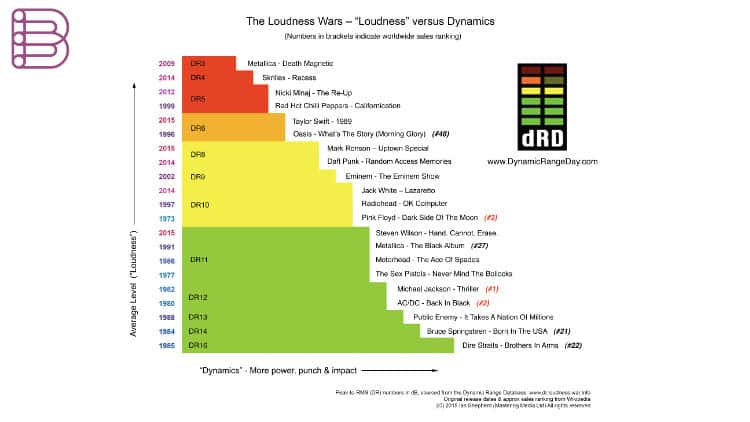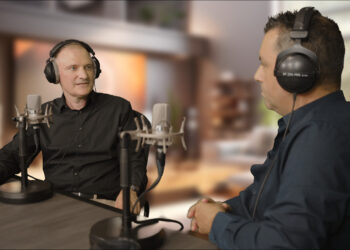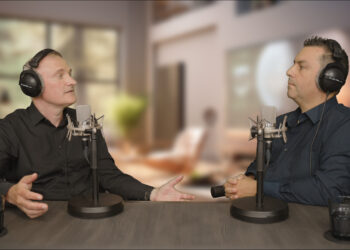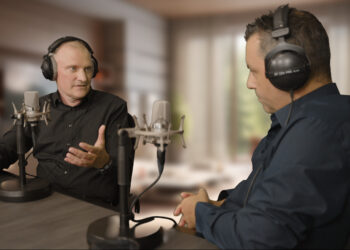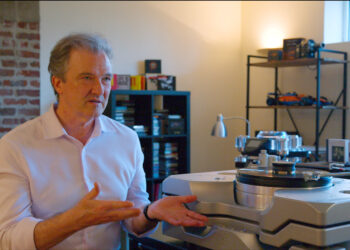In this 6th part Peter Lyngdorf explains why enjoying compressed music is a contradiction.
Peter Lyngdorf – CEO Steinway Lyngdorf: First of all you have to remember that there are 2 kinds of compression. There’s the data reduction, which is what happening with mp3, that’s data compression. A different thing is dynamic range compression. Data compression is that you less data to describe the signal, as you do with mp3. Mp3 in itself, if you run 128kBi/sec files, can sound kind of ok…not to aggressive or unpleasant. You’re loosing quiet a bit. 192kBit/sec can sound absolutely ok for your car. I would say that it’s fine for your car. It’s not fine for your home system. So, that’s one kind of compression, the data reduction.
The other compression is the dynamic range compression. Dynamic range compression is that you take a certain dynamic range and you reduce that. What you do by that is…with every format you have a maximum level. The more you compress the signal, the more you reduce the difference between loud and soft, the louder the average will be. There has been a competition between music labels -the record industry- to have the loudest music, louder than anybody else. The problem with that is, you can only get loudness by having more sound all the time. That’s what most people don’t understand. Compression is not just that you lift up everything to a certain level, but to get more loudness you need to extend in the time domain. For instance if you have low frequency phenomenon, let’s take a kick drum, with a big thump at 40Hz. It’s one big swing at 40Hz, fundamental. If you want to make that 13dB louder, that’s 20 times louder! How can you make it louder because it’s already at 0dB? Technicians want to have it louder. How can they do that? Instead of just one, you take 20 after each other. All of a sudden that kick drum that really should be like -bang- goes like -bwuuuuttt- because you take 20 cycles. It’s no longer a bang, it’s a blow of energy. That’s one of the most damaging effects of dynamic range compression. You shift in the time domain and your rhythm disappears. The funny thing is, you can compress a human voice quiet a bit without it sounding bad. If you do it with drums, percussion, everything starts to sound the same and there’s no kick, no punch, no definition. There’s no depth. And there’s no quiet. Music is also about what’s happening between the notes. If you want to have something that is extremely loud, like pop tracks today, there’s no time for quiet. So it is loud all the time. That is making it -in my opinion- extremely annoying to listen to.
150 years ago, the Grand Piano really broke trough and that was with the Steinway Grand Piano. Once people heard the Grand Piano they wanted to hear that instrument above the harpsichord. Before the Grand Piano, the harpsichord was a keyboard instrument. It was Steinway that designed a piano to be loud enough to be heard in combination with a symphonic orchestra. The Grand Piano became extremely popular. After just a few years the harpsichord disappeared completely. Why did the harpsichord disappear? Because with a harpsichord you’re plucking the strings. No matter how hard you hit the keys, you have the same loudness. The harpsichord has less dynamic range. You can listen to harpsichord for maybe 5 or 10 minutes. After half an hour it drives you up the wall. Because of the same loudness you have no dynamic range. The music school in Paris ripped out all their harpsichords, approximately 5 years after Steinway made the Grand Piano. They had a very cold winter. In that winter they burned all the harpsichords to keep warm. They couldn’t stand the sound anymore. Lack of dynamic range.
Dynamic range is essential for the emotion in music. There is a great tendency on the way now to normalize loudness, so that you put loudness at -16dB for instance and keep it there. If people start to compress the signal it just starts to sound shitty and doesn’t get louder. Loudness normalization is coming to Spotify, Tidal, a lot of the streaming services, a lot of the radio stations around Europe. In the US they have adapted loudness normalization. Gradually there will be no benefit for the record labels in compressing the music. The music industry is by far the most backwards industry in the world. They are pushed into technology developments, but they never lead them. For some reason they are the most conservative, the most disruptive industry I know of. It will take them probably 10 years to realize that there’s no benefit in compressing the music, except that it’s gonna sound worse. Sooner or later they will realize that quality sells. There’s a good reason that Starbucks sells a lot of coffee. That’s because every cup tastes kind of good. When the music industry starts to make music that sound really good again, they are going to sell more. It may take a few years for them to realize it’s all wrong in terms of pop music. There’s a lot of fantastic jazz and classical music. There are also a few good pop recordings. I had the good fortune of working together with Mark Knofler. He’s also very keen on helping developing great dynamic range music and supporting that a great deal. I think there’s a movement coming, that will ensure better quality. Again.
Visit the Steinway Lyngdorf website.





